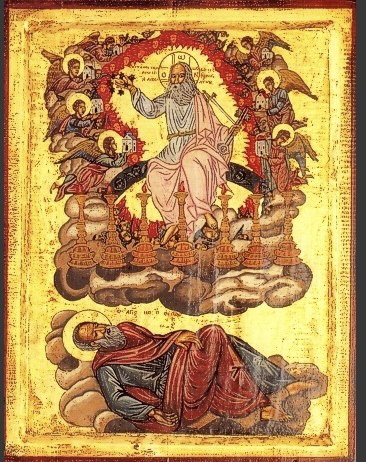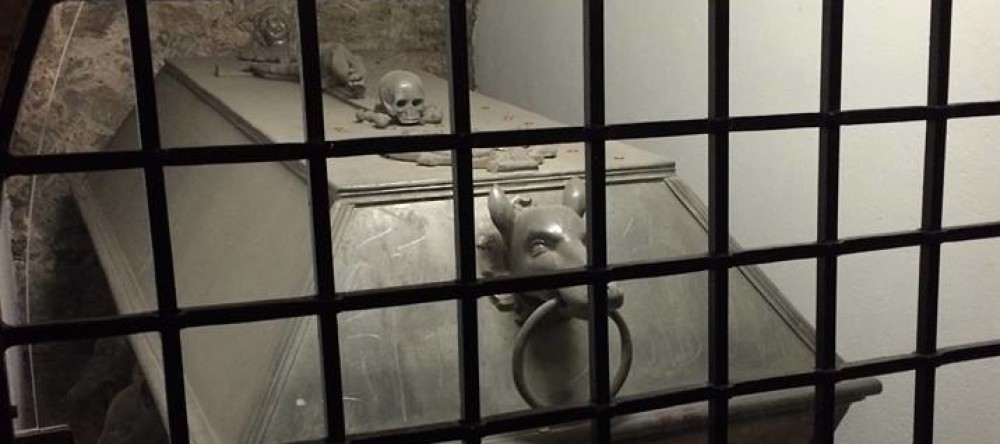
“Do not be afraid. I am the First and the Last. I am the Living One; I was dead, and–behold!–I am alive for ever and ever! Amen. And I hold the keys of Death and Hades.” (Apocalypse 1:17-18)
In the opening chapter of the Apocalypse, the phrase “I am the First and the Last” is a refrain that occurs several times. First and Last, beginning and the end, alpha and omega (the first and last letters of the Greek alphabet). The original phrase seems to have been “the first and the last, the alpha and the omega;” the words “beginning and the end” seem to have been added in the Latin manuscripts to explain what “alpha” and “omega” were to readers who didn’t know Greek. The phrase is also similar to the famous Ego emi… (“I Am….”) phrases in the Gospel According to St. John: I am the true bread… I am the good shepherd… I am the true vine… etc.
“I am the Living One” is also reminiscent of the Old Testament identification of “the Living God” (Deut. 5:26, Joshua 3:10, Isaiah 37:4, 17). The one who appears to St. John in Patmos is the same Divine Person who revealed himself to Moses at the Burning Bush and repeatedly to the kings and prophets of Israel.
Death and Hades-Hell (Sheol, in some versions) can be understood as two names for the same thing (the experience of separation from God). Hebrew poetry is built on this repetition of ideas and experiences. Many of the psalms repeat themselves in this way.
But Death and Hades are also personified in Apoc. 6:8 as one of the famous Four Horsemen: the fourth rider, who rides a pale horse, is named “Death and Hades.” Early Christian preaching–reflected in the Gospel of Nicodemus–identified Death and Hades as two distinct personages who oversee the land of the dead; they argue as Christ approaches and are overthrown as Christ leads their prisoners to freedom through the gates he has smashed during his Descent into Hell. Some early Christian poetry identify “Death” as a person whiles “Hades” is the place where Death reigns.
Gregory Nanzianzus, commonly known as Gregory the Theologian, thought that the two names Death and Hades referred to the physical and spiritual aspects of death–the result of separation from God. A person can die spiritually many years before they experience death physically–Adam and Eve are examples of people who die spiritually long before their bodies die. Likewise, in baptism people can experience spiritual resurrection before they experience physical resurrection.
